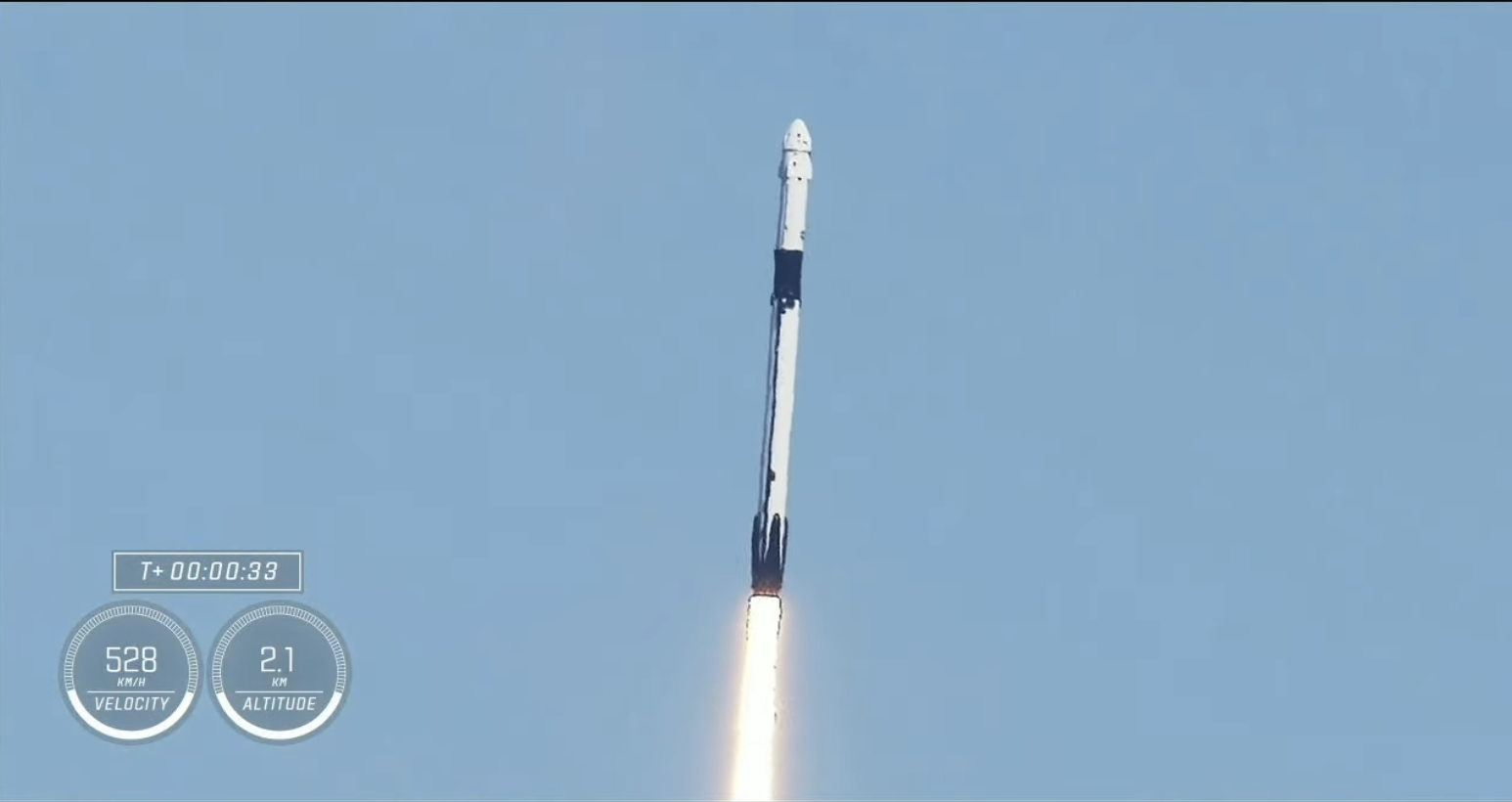
Four spacefarers from three nations—Russia, Japan and the United States—are on their way to the International Space Station (ISS), following Wednesday’s successful launch of a brand-new SpaceX Falcon 9 booster from historic Pad 39A at the Kennedy Space Center (KSC) in Florida. Liftoff of Dragon Endurance on her second flight occurred at 12:00:57 p.m. EDT and NASA astronauts Nicole Mann and Josh Cassada, seasoned Japanese spacefarer Koichi Wakata and Russian cosmonaut Anna Kikina are now well into a 29-hour, 17-orbit rendezvous profile to reach the sprawling orbital complex tomorrow.
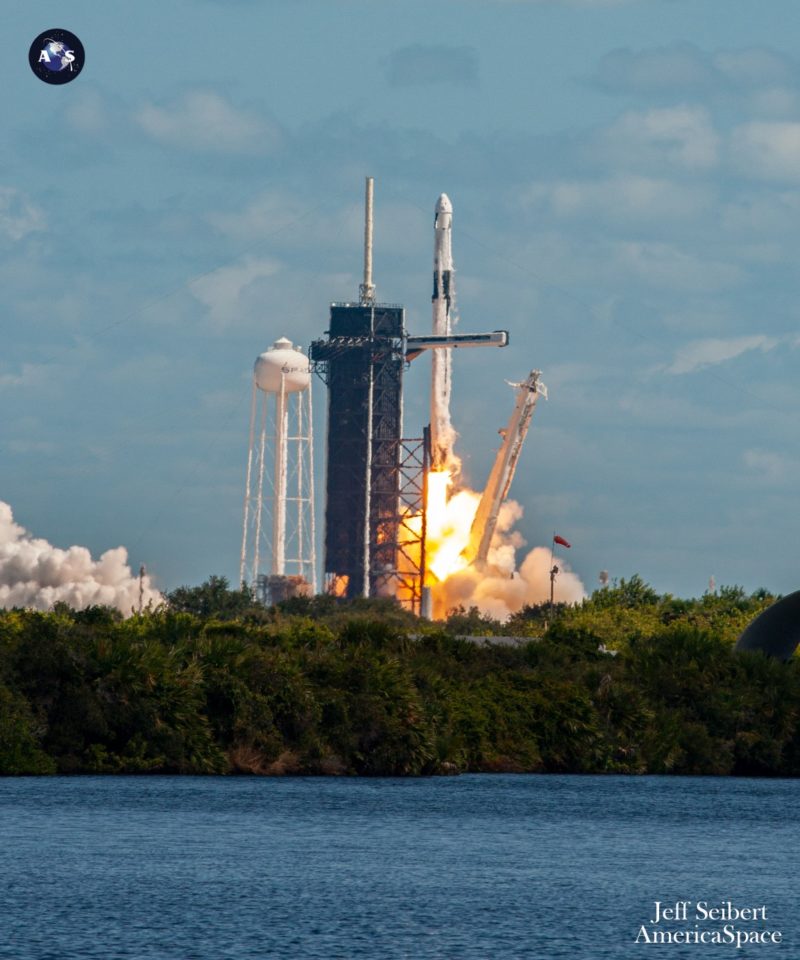
“Missions like Crew-5 are proof we are living through a golden era of commercial space exploration,” said NASA Administrator Bill Nelson, following today’s flawless launch. “It’s a new era powered by the spirit of partnership, fueled by scientific ingenuity and inspired by the quest of new discoveries.
“During their stay aboard the International Space Station, Crew-5 will conduct more than 200 science experiments and technology demonstrations, including studies on printing human organs in space and better understanding heart disease,” the administrator continued. “While our eyes are focused upward on the heavens, let us never forget these missions will also better life here on Earth.”
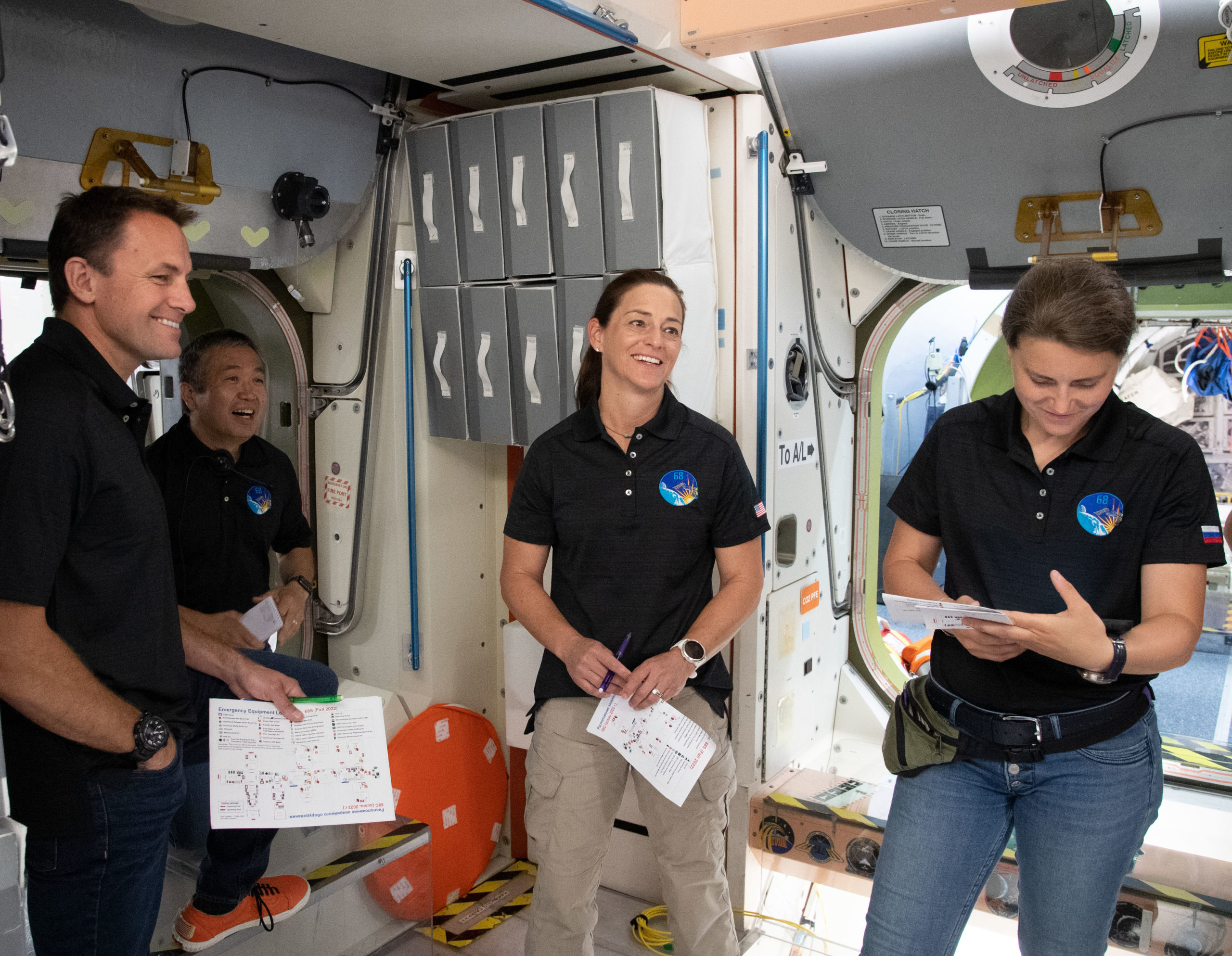
As previously outlined by AmericaSpace, Mann and Cassada were assigned to this mission in October 2021, having transitioned over from their earlier roles on the Crew Flight Test (CFT) and first Post-Certification Mission (PCM-1) of Boeing’s CST-100 Starliner. Wakata’s place on the crew was revealed by the Japan Aerospace Exploration Agency (JAXA) last fall, but Dragon Endurance’s fourth seat remained formally unfilled until mid-July of this year, when a long-awaited integrated crew agreement between NASA and Roscosmos was finally signed.
The integrated crew agreement, whose signing was thrown into doubt following President Vladimir Putin’s invasion of Ukraine in February, is designed to ensure that at least one U.S. astronaut flies aboard each Russian Soyuz spacecraft and at least one Russian cosmonaut rides each U.S. Crew Dragon. This will maintain an unbroken presence of U.S. and Russian crew members on the ISS in the event of launch delays or a premature return to Earth of one or more of the partners’ crew vehicles.
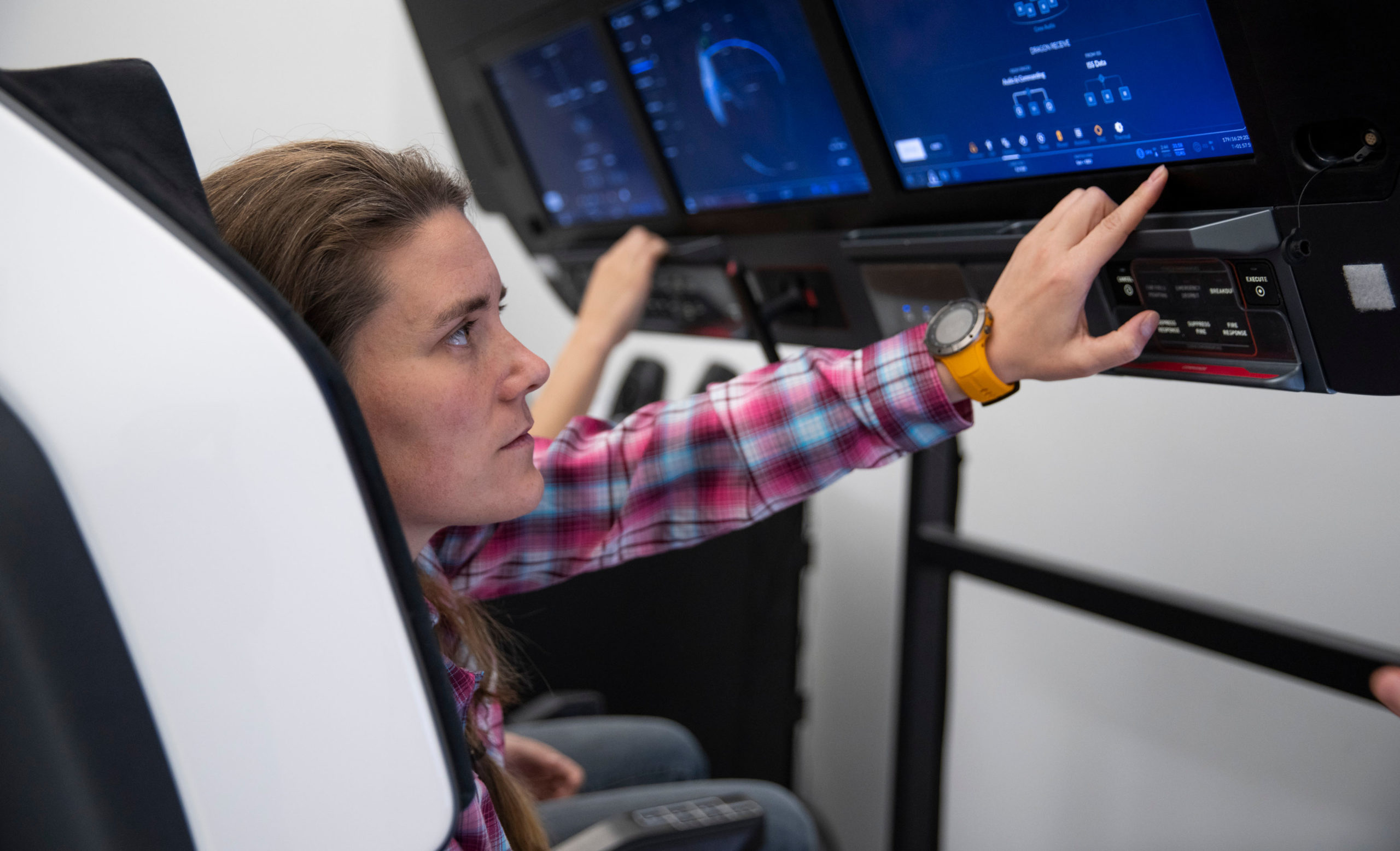
Assigned to the fourth seat aboard Dragon Endurance for Crew-5, Anna Kikina becomes Russia’s fifth woman spacefarer. She follows in the footsteps of pioneer Valentina Tereshkova, the first female spacewalker Svetlana Savitskaya, shuttle veteran Yelena Kondakova and former ISS resident Yelena Serova and will be the first Russian cosmonaut to fly aboard a U.S. crewed vehicle since Nikolai Budarin on shuttle Endeavour’s STS-113 mission, way back in November 2002.
Launch was scheduled for early September, but was pushed until the month’s end, in part following damage incurred by B1077’s inter-stage during its road transit from SpaceX’s factory in Hawthorne, Calif., to the rocket development facility in McGregor, Texas. The booster inadvertently impacted a road bridge, requiring the replacement of the inter-stage and an extensive raft of recertification checks.
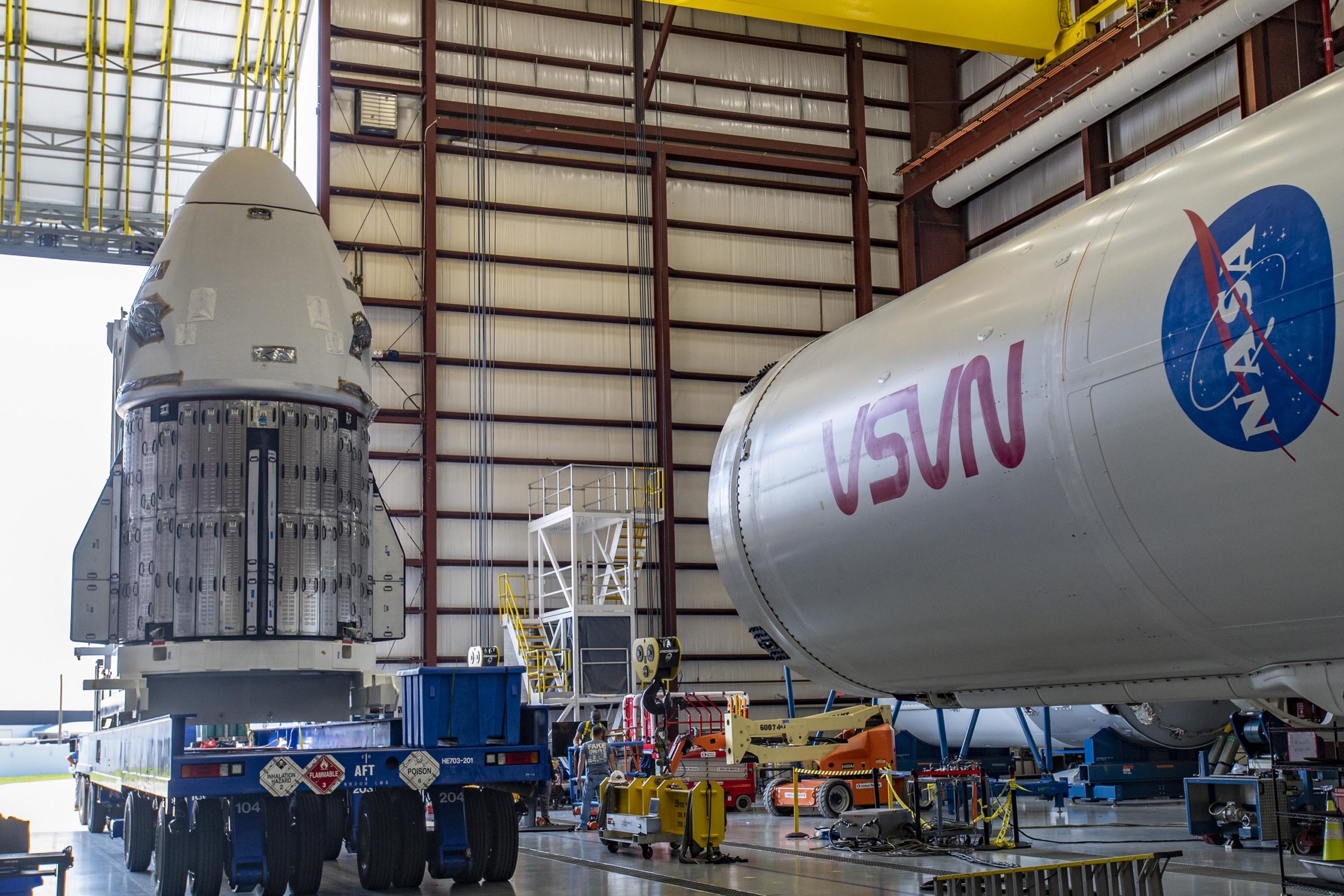
B1077’s nine Merlin 1D+ engines were also static-fired at McGregor and the booster was delivered to KSC early last month. In the meantime, Dragon Endurance underwent extensive modifications of her own since she returned from her first flight, the 177-day Crew-3 mission in early May.
She received new parachutes and pod panels and on Crew-5 becomes the first Crew Dragon to carry four previously flown forward bulkhead Draco thrusters. She was transported into the horizontal integration facility at Pad 39A on 23 September for integration atop the Falcon 9, topping-off the booster at 230 feet (70 meters).
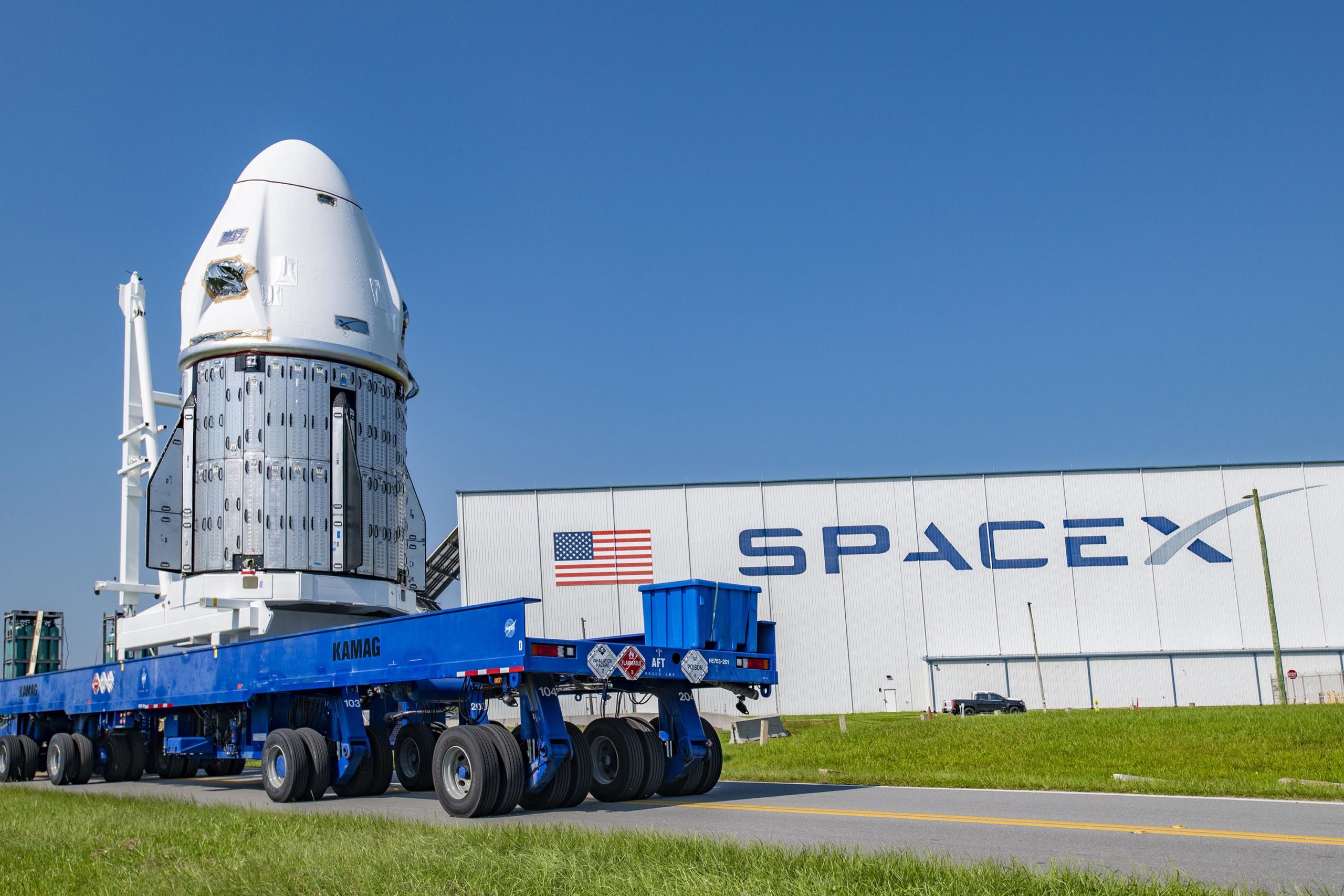
In order to create “schedule deconfliction” and better spacing following 29 September’s departure of Soyuz MS-21 cosmonauts Oleg Artemyev, Denis Matveev and Sergei Korsakov, Crew-5 slipped a few additional days to 3 October. And the ravages of Hurricane Ian, which battered Florida in the second half of September, conspired to add a couple more days of delay, bringing us squarely to today.
As a direct consequence of Ian, the arrival of Mann, Cassada, Wakata and Kikina in Florida was pushed back a handful of days and they flew into the Space Coast last Saturday. Earlier today, they were awakened, underwent medical checks and were given a weather briefing, ahead of donning their customized SpaceX launch and entry suits in the Neil A. Armstrong Operations & Checkout Building.
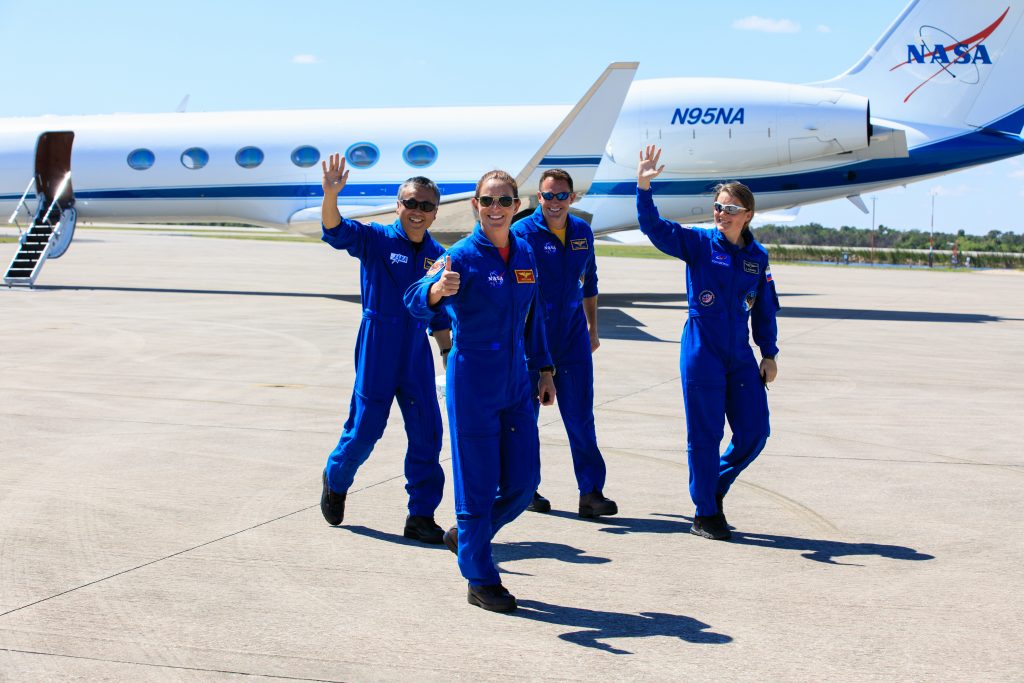
Weather conditions for today’s launch, as with yesterday’s launch of a United Launch Alliance (ULA) Atlas V, carrying the dual-stacked SES-20/21 communications satellites, were near-perfect. Forecasters at the 45th Weather Squadron at Patrick Space Force identified a 90-percent probability of conditions being acceptable at T-0.
“While a few small, short-lived coastal showers cannot be completely ruled out with the onshore flow, very dry air in the mid and upper levels will cap off any significant activity,” noted the 45th. “Launch conditions will be favorable.”
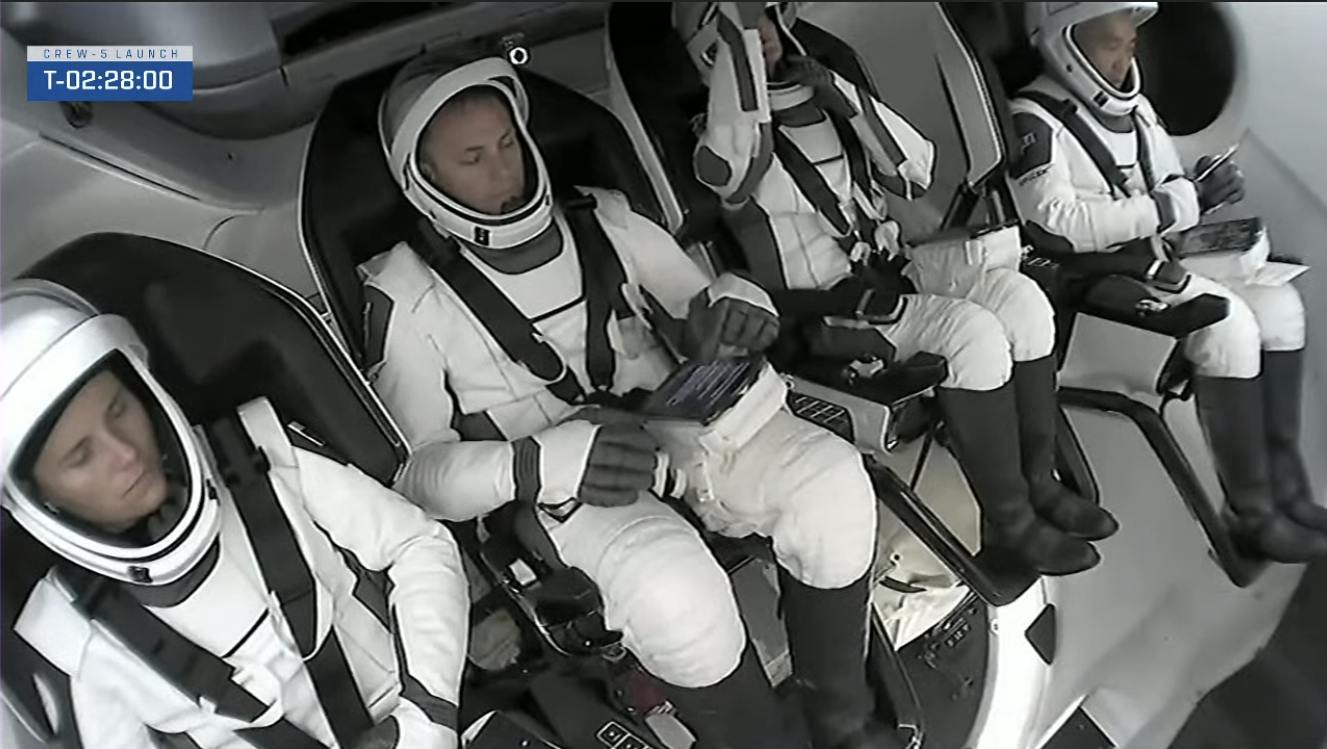
And favorable they were. After waving a final farewell to friends, family and well-wishers, the quartet boarded the Tesla Model Xs for the 20-minute road transfer out to Pad 39A. At the pad, they rode the elevator up to Dragon Endurance’s access hatch and were assisted into their couches.
Thirty-five minutes ahead of T-0, the flow of liquid oxygen and a highly refined form of rocket-grade kerosene (known as “RP-1”) into the Falcon 9’s propellant tanks got underway. Liftoff was as picture-perfect as could be expected, as B1077 roared aloft at 12:00:57 p.m. EDT, her nine Merlin 1D+ engines punching the stack airborne under a combined thrust of 1.5 million pounds (680,000 kilograms).
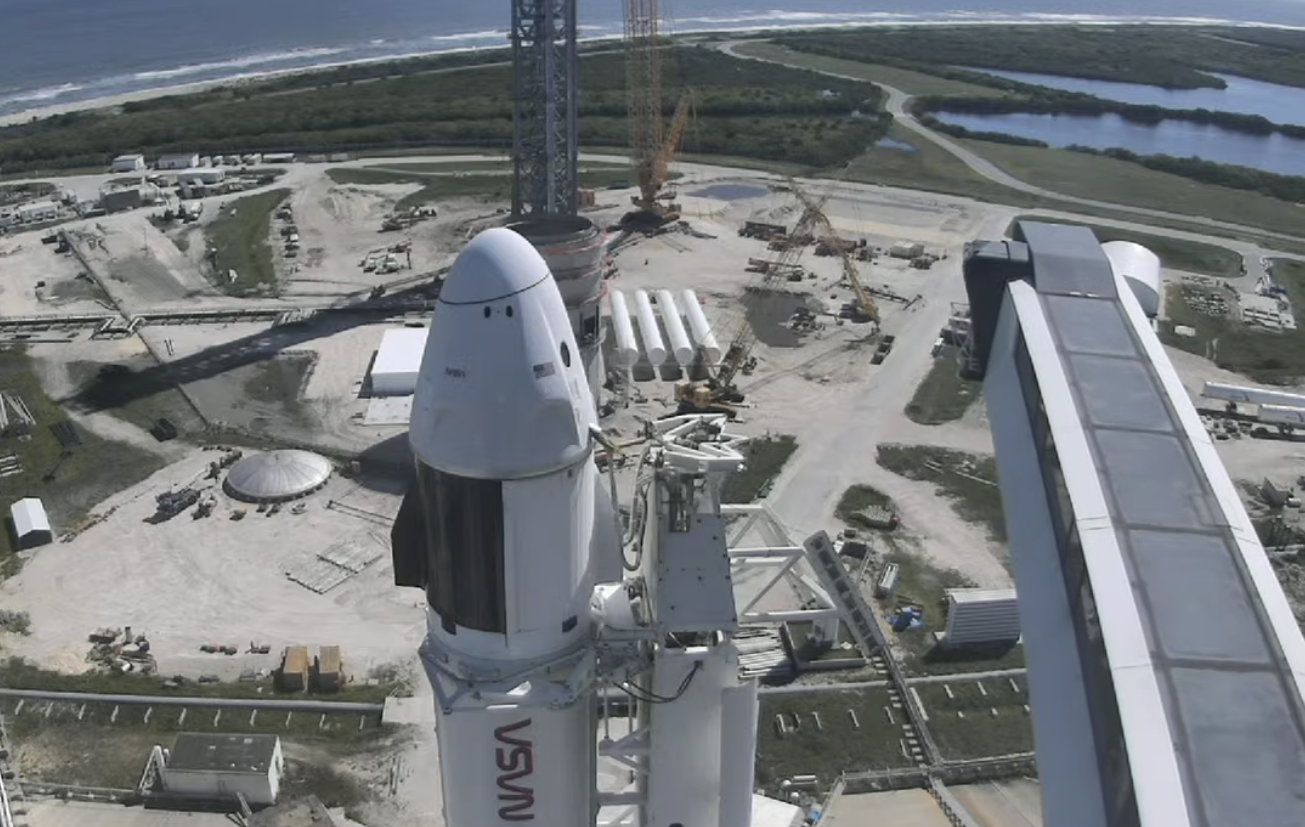
B1077 separated from the stack at 2.5 minutes into flight and began a graceful descent to alight on the deck of the Autonomous Spaceport Drone Ship (ASDS), “Just Read the Instructions”, situated about 400 miles (640 kilometers) offshore in the Atlantic Ocean. The drone ship put to sea more than a week ago and sheltered in the Bahamas during the worst of Hurricane Ian’s onslaught.
Touchdown on JRTI came at nine minutes and 30 seconds into the flight. Shortly after launch, NASA revealed that B1077 will fly again next spring to launch NASA astronauts Steve Bowen and Warren “Woody” Hoburg, together with Russia’s Andrei Fedyayev and Sultan AlNeyadi of the United Arab Emirates (UAE) on the Crew-6 mission to the ISS.
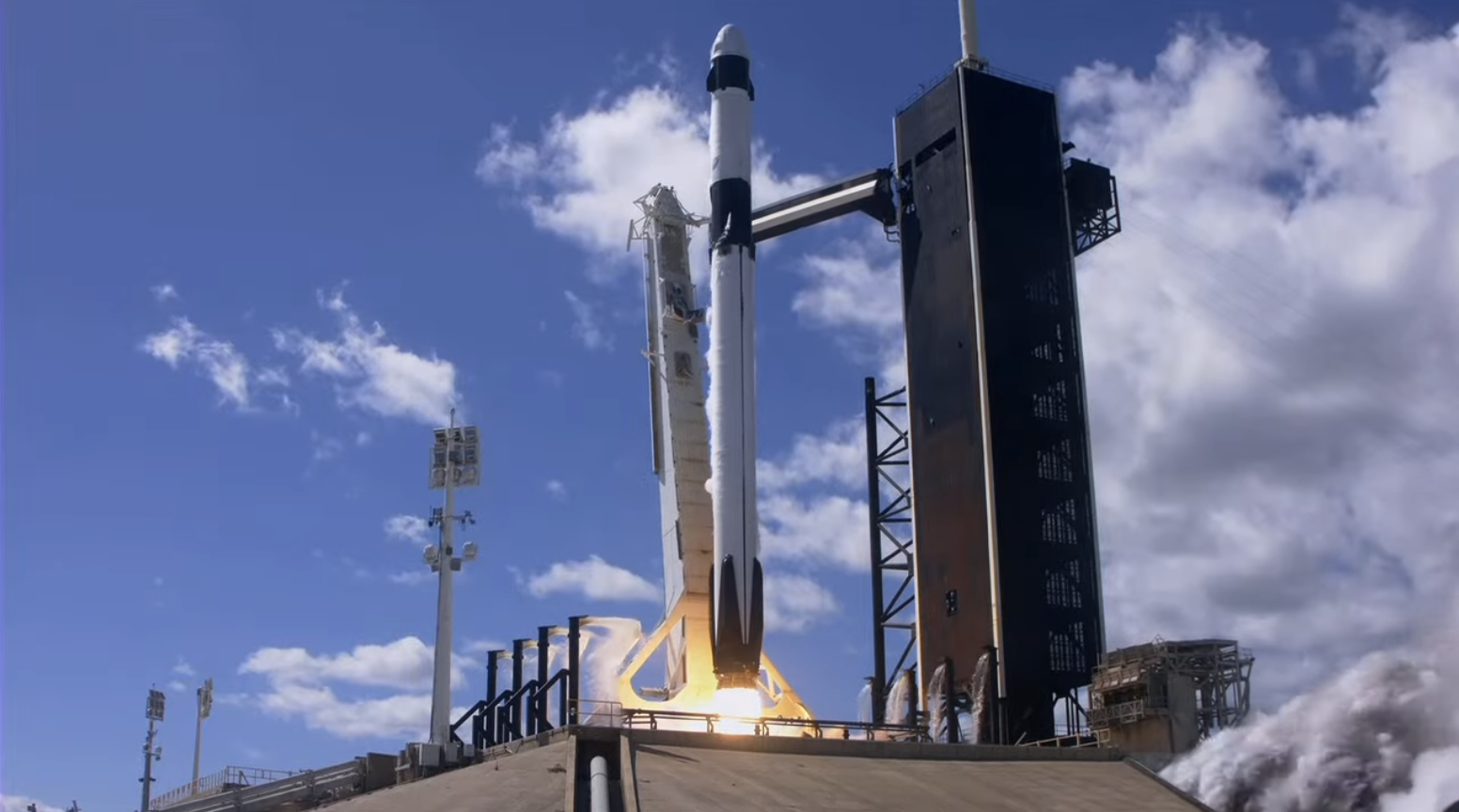
With B1077’s job done, the single Merlin 1D+ Vacuum engine of the Falcon 9’s second stage ignited to push Dragon Endurance the rest of the way into orbit. And not long after spacecraft separation, Cassada was able to reveal the crew’s zero-gravity indicator, a baby Einstein, illustrative of humanity’s progress in space and science.
Next up for Crew-5 is rendezvous and docking at the ISS, scheduled for approximately 4:57 p.m. EDT Thursday, about 29 hours after launch. This will mark the longest transit of any crewed Dragon to the station, just pipping Crew-1, who spent 27.5 hours in free flight between the launch and arrival back in November 2020.
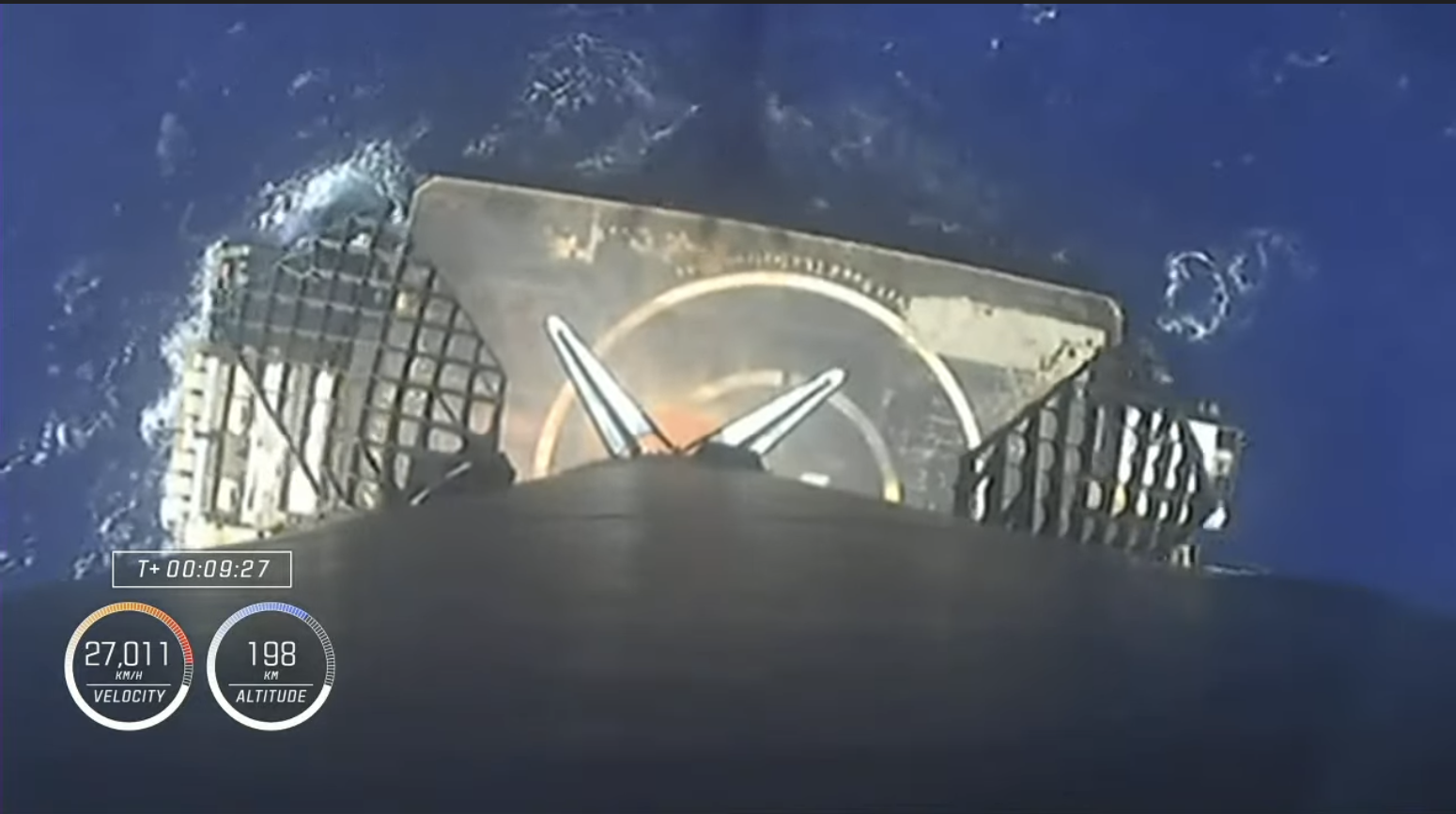
First-time flyers Mann, Cassada and Kikina, together with Wakata, who is making his fifth space mission—with a pair of Space Shuttle flights and two long-duration ISS increments under his belt—will be welcomed aboard the station by Expedition 68 Commander Samantha Cristoforetti of Italy, U.S. astronauts Kjell Lindgren, Bob “Farmer” Hines, Jessica Watkins and Frank Rubio and Russian cosmonauts Sergei Prokopyev and Dmitri Petelin. The newly expanded crew of ten will enjoy a five-day “direct handover”, before Lindgren, Hines, Cristoforetti and Watkins depart aboard their Dragon Freedom ship on 12/13 October, returning to Earth after 5.5 months in orbit.
Command of Expedition 68 will pass to Prokopyev, who will lead the remainder of the increment until next spring. Current plans are for Mann, Cassada, Wakata and Kikina to remain in space for about 145 days, returning home in late February. During their time together, the crew will participate in more than 200 scientific and technological experiments and welcome multiple visiting vehicles, including pairs of Russian Progress freighters, SpaceX Cargo Dragons and Northrop Grumman Corp. Cygnuses and perhaps the Crew Flight Test (CFT) of Boeing’s CST-100 Starliner.
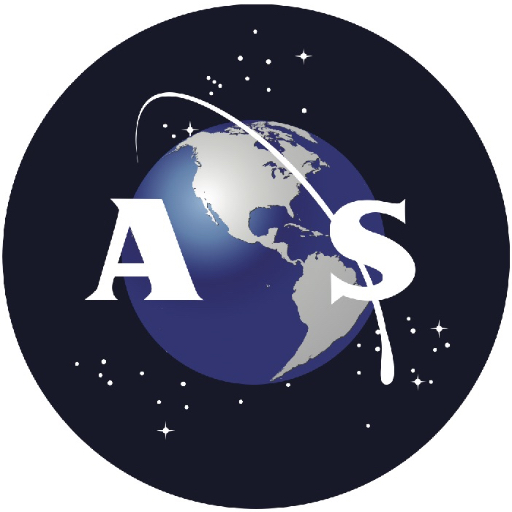
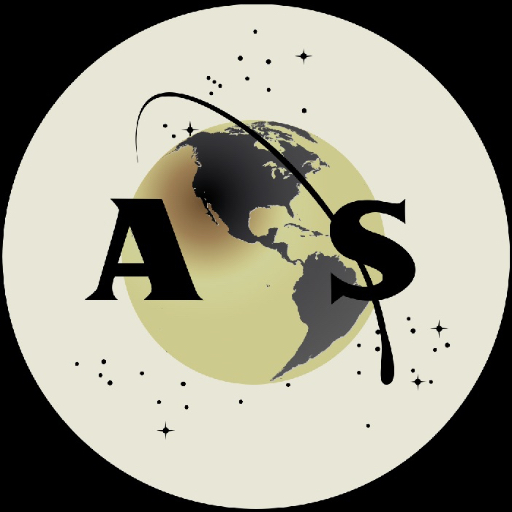
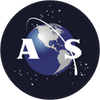
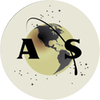
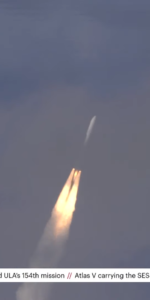
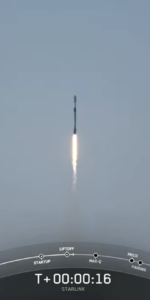
18 Comments
18 Pings & Trackbacks
Pingback:SpaceX Launches 2022’s Tenth Falcon 9 from Vandenberg, As Busy October Beckons - AmericaSpace
Pingback:Record-Tying 14x-Flown Falcon 9 Lifts Galaxy 33/34 Twins to Space - AmericaSpace
Pingback:SpaceX Launches Fourth Falcon 9 of October, Fourth Geostationary Mission of Year - AmericaSpace
Pingback:Northrop Grumman Launches NG-18 Cygnus to Space Station, Honors Pioneer Sally Ride - AmericaSpace
Pingback:SpaceX May Attempt Two Launches, Six Hours Apart Tuesday - Space News
Pingback:SpaceX Aims for Two Launches Tonight, Watches Vandenberg Weather - AmericaSpace
Pingback:SpaceX jette ce brunante, gardez un œil sur la météo de Vandenberg – spyxfamily-es
Pingback:NASA, Roscosmos Revise ISS Crew Schedule, Following Soyuz Leak - AmericaSpace
Pingback:NASA, Roscosmos Revise ISS Crew Schedule, Following Soyuz Leak - Space News
Pingback:SpaceX Launches GPS III-06, Busy January Continues - AmericaSpace
Pingback:SpaceX Plans East/West Coast Falcon 9 Launches & Landings, Nine Hours Apart - AmericaSpace
Pingback:SpaceX Launches Inmarsat-6 F2, Other GTO-Bound Missions Wait in Wings - AmericaSpace
Pingback:Crew-6 Arrives in Florida, Heads for Monday Pre-Dawn Launch to Space Station - AmericaSpace
Pingback:Crew-6 Arrives in Florida, Heads for Monday Pre-Dawn Launch to Space Station - Space News
Pingback:As Crew-6 Launches, Space Station Readies for First Year-Long & First Danish Commanders - AmericaSpace
Pingback:Crew-5 Splashes Down, Wraps Up Five-Month ISS Mission - AmericaSpace
Pingback:SpaceX Prepares for Record-Breaking Falcon 9 Launch Today - AmericaSpace
Pingback:SpaceX Prepares for Report-Breaking Falcon 9 Release As of late - NACION ASTRAL